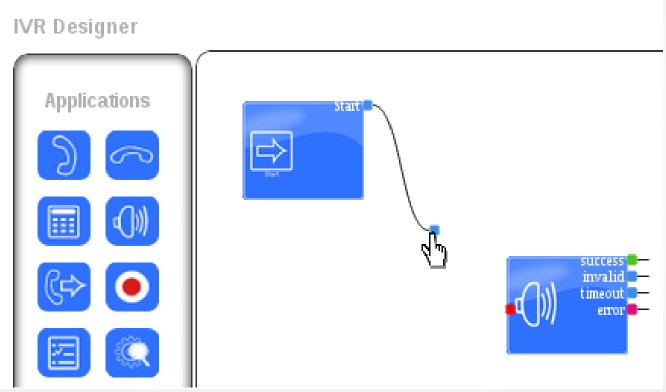Introduction:
In the rapidly evolving world of modern business, the importance of customer service cannot be overstated when it comes to fostering customer satisfaction and loyalty. To keep up with the growing expectations of consumers, organizations are embracing cutting-edge technological solutions like software contact centers. These innovative systems, based on software, offer a wide array of functionalities and advantages that significantly improve operational efficiency, effectiveness, and the overall customer journey. In the following piece, we will delve into the realm of software contact center solutions, examining their primary features and showcasing the extensive range of benefits they bring to businesses.
1. Understanding Software Contact Centers
A software contact center, alternatively referred to as a virtual contact center or cloud-based contact center, serves as a centralized hub that empowers enterprises to effectively handle customer engagements across multiple channels, including voice, email, chat, and social media. In contrast to conventional call centers that heavily depend on physical infrastructure, software contact centers leverage internet-based technologies to facilitate seamless communication and optimize the efficiency of customer service processes.

2. Key Features of Software Contact Center Solutions:
2.1 Omnichannel Communication
An essential characteristic of software contact center solutions is their capability to manage omnichannel communication effectively. In today’s customer-centric landscape, individuals anticipate smooth interactions across various channels, and software contact centers offer a unified interface to handle these interactions seamlessly. Agents can effortlessly transition between channels, ensuring contextual continuity and delivering consistent support to customers.
2.2 Automatic Call Distribution (ACD)
ACD is a crucial feature of software contact centers that efficiently distributes incoming calls to the most appropriate available agents. By utilizing intelligent routing algorithms, ACD ensures that customers are connected to the right agent with the necessary skills and knowledge to address their specific queries or concerns. This feature optimizes resource utilization and reduces customer wait times.
2.3 Interactive Voice Response (IVR)
IVR systems enable customers to interact with automated voice menus, providing self-service options for routine inquiries or transactional tasks. IVR in software contact centers can be highly customizable, allowing businesses to tailor menus, prompts, and routing options to meet their specific requirements. This feature enhances efficiency by automating repetitive tasks and freeing up agents to handle more complex customer issues.

2.4 Call Recording and Analytics
Software contact center solutions frequently incorporate features for call recording, which empower businesses to monitor and analyze customer interactions. By capturing and storing call recordings, organizations can gain valuable insights for quality assurance, training, and compliance purposes. Furthermore, software contact centers integrate advanced analytics tools that facilitate the extraction of actionable intelligence from customer data. This enables businesses to identify trends, patterns, and areas in need of improvement, empowering them to make informed decisions based on data-driven insights.
2.5 Real-time Reporting and Monitoring
Real-time reporting and monitoring features empower contact center managers to track and evaluate key performance indicators (KPIs) in real-time. These insights enable proactive decision-making, ensuring that resources are allocated effectively, service levels are maintained, and customer satisfaction is optimized. Real-time reporting also helps identify bottlenecks and enables immediate action to address any issues.
3. Benefits of Software Contact Center Solutions:
3.1 Enhanced Customer Experience:
Software contact centers significantly enhance the overall customer experience by providing seamless omnichannel support. Customers can reach businesses through their preferred channels, receive consistent service, and enjoy shorter response times. Furthermore, the ability to access customer history and context allows agents to personalize interactions, leading to increased customer satisfaction and loyalty.
3.2 Improved Efficiency and Productivity:
By automating routine tasks, optimizing call routing, and providing comprehensive reporting, software contact centers enhance the efficiency and productivity of customer service operations. Agents can handle a higher volume of inquiries, reduce handling times, and provide more accurate resolutions. The centralized platform also promotes collaboration among agents and simplifies workflow management.
3.3 Scalability and Flexibility:
Software contact center solutions offer scalability and flexibility, allowing businesses to adapt to changing customer demands and seasonal fluctuations. As they operate in the cloud, these solutions can easily accommodate increased call volumes, add or remove agents as needed, and integrate with other business applications seamlessly. This scalability ensures that customer service operations can evolve alongside business growth.
3.4 Cost Savings:
Compared to traditional on-premises call centers, software contact center solutions offer cost savings in terms of infrastructure, maintenance, and staffing. With cloud-based solutions, businesses can eliminate the need for physical infrastructure and associated costs. Additionally, the pay-as-you-go pricing models offered by many software contact center providers allow businesses to align costs with usage, optimizing their budgetary allocation.
Conclusion:
Software contact center solutions have revolutionized the way businesses handle customer interactions, offering a wide range of features and benefits that enhance efficiency, improve customer experience, and drive business growth. By leveraging omnichannel communication, intelligent call routing, self-service options, and advanced analytics, businesses can deliver exceptional customer service while optimizing their operational processes. Embracing software contact center solutions is a strategic move for companies seeking to remain competitive and meet the evolving needs of today’s customers.
Leveraging Open Source in ICT
